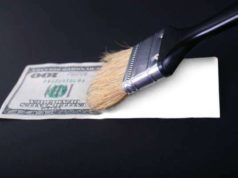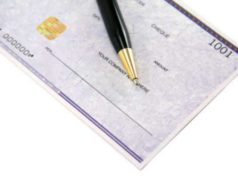
The value of currency is an important concern of everyone, not only economists and central banks. Central banks, like the American Federal Reserve, the European Central Bank, the Central Bank of London, along with their respective treasury departments are entrusted with the authority of producing currency. Whether it is the American dollar, the Euro, or the British pound, all currencies are subject to counterfeiting.
Counterfeiting is the production of fake money. It is a considered a form of forgery because it involves the fabrication of one of the most important documents: money.
Counterfeiting
Counterfeiting is a crime that effects everyone because if there is enough counterfeit money circulating undetected in an economy, it can easily cause an economy to collapse. Counterfeiters even delude themselves into believing that they are rich by printing out excess money. In reality, they are creating money that is not only worthless, but damaging the value of legitimate money.
Counterfeiters make accurate replicas of money to misguide the trust of their victims. Essentially the value of all money is based on trust. People generally trust each other that the money they are giving them is legitimate. Counterfeiters forge sophisticated copies of money. They replicate the images, the texture, and the colors on money in a manner that is equally sophisticated than the money that a country’s treasury department prints.
Treasury departments worldwide are constantly changing the look and feel of money to combat counterfeiting. Many central banks and treasuries have exclusive monopolies over certain types of ink or paper. They may add watermarks, multicolored confetti to a central bank note’s paper. The American dollar, for example, is known to have cotton as an additive to the paper of the money.
Cotton contributes to the American dollars distinctive texture. During the 1990’s, the treasury department changed the look of money to a larger format than older money to combat counterfeiting in the digital age.>
Counterfeiting is a crime that affects everyone because if there is enough counterfeit money circulating undetected in an economy, it can easily cause an economy to collapse. Counterfeiters even delude themselves into believing that they are rich by printing out excess money. In reality, they are creating money that is not only worthless, but damaging the value of legitimate money.
Counterfeiters make accurate replicas of money to misguide the trust of their victims. Essentially the value of all money is based on trust. People generally trust each other that the money they are giving them is legitimate. Counterfeiters forge sophisticated copies of money. They replicate the images, the texture, and the colors on money in a manner that is equally sophisticated than the money that a country’s treasury department prints.
Treasury departments worldwide are constantly changing the look and feel of money to combat counterfeiting. Many central banks and treasuries have exclusive monopolies over certain types of ink or paper. They may add watermarks, multicolored confetti to a central bank note’s paper. The American dollar, for example, is known to have cotton as an additive to the paper of the money.
Cotton contributes to the American dollar’s distinctive texture. During the 1990s, the Treasury Department changed the look of money to a larger format than older money to combat counterfeiting in the digital age.
Today currencies are globally traded, making counterfeiting harder to track. International law enforcement agencies like Interpol promote cooperation among the national governments of the world to protect currencies from counterfeiting.
For example, if the Federal Bureau of Investigation discovers that an American citizen is involved in the counterfeiting of the Euro, the FBI must share intelligence with the law enforcement agencies of the Eurozone.
Counterfeiting is an international problem of the modern global economy and is showing no signs of depleting. The extent and scope of this form of forgery is unknown, but its effect on the value of world currencies is well-known.























